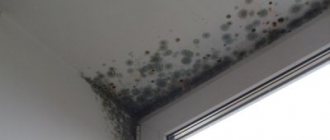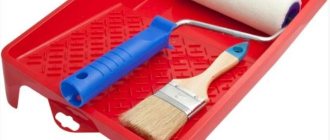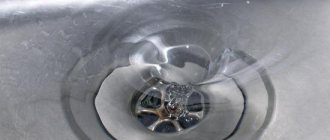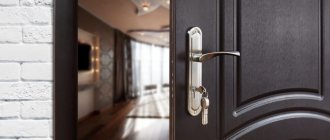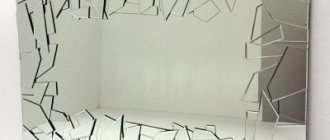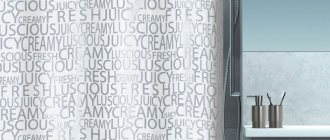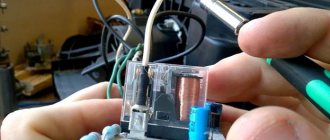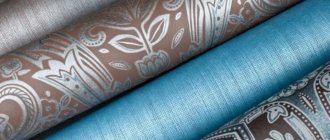At home, the question of how to get rid of mold on wood can be solved in different ways. In the old days, a house infected with fungus was simply burned, but now more gentle means have appeared. Next, we will try to understand the reasons for the appearance of this scourge, and most importantly, you will learn how to deal with mold on wooden surfaces in several ways.
How to get rid of mold on wood using modern and folk methods
Reasons for appearance
Mold is a fungus that reproduces by attaching and propagating spores. Individual boards or the entire bathhouse become a site of fungal attack only when favorable conditions occur. These include:
- high humidity;
- elevated temperature;
- insufficient air circulation in the room.
In order to choose the optimal control method, first determine the cause of the formations. Methods include both measuring temperature and humidity using special instruments.
Why does wood deteriorate?
Mold reproduces by spores and even “healthy” boards can become covered with unsightly blue spots over time. Such disputes exist everywhere - on roads, fields and forests. At the same time, the types of mold that live in forest plantations actually cover 40% of the branches and trunks. Spores can easily enter the home via pets, wind, and shoes. When microorganisms penetrate into housing, where conditions are favorable for active development (humidity 70%, temperature in the range +5...+30 ̊C), they grow. Mold on wooden coverings and cladding materials occurs in the following situations:
the house is not heated regularly; do not monitor the condition of the basement; ventilation is not organized correctly; wooden surfaces are not treated with specialized compounds; do not pay attention to the condition of the foundation. Inside homes, the fungus most often affects wood and other surfaces in damp places, usually bathrooms.
Most often, ventilation problems are also the cause. This is because when air does not circulate, mold colonies grow very quickly. In addition to the above, the cause of mold stains is often violations or a complete lack of waterproofing
Inside homes, the fungus most often affects wood and other surfaces in damp places, usually bathrooms. Most often, ventilation problems are also the cause. This is because when air does not circulate, mold colonies grow very quickly. In addition to the above, the cause of mold stains is often violations or a complete lack of waterproofing.
How does it affect wooden surfaces?
Microscopic fungi lead to the destruction of the place where they live. Boards and any wooden furniture are destroyed, and there is no way to hide this afterwards.
You will only have to buy new things, which, of course, is not profitable, since without getting rid of the cause of the fungus in the house, it will also quickly become unusable.
But besides this, it should be understood that fungi are not entirely localized on the surface. They literally fly around the room, which can cause not only allergic reactions in people and animals there, but also, as doctors say, cancer.
Preventing food contamination
Who wants to suffer from food poisoning? Follow these simple tips to avoid such problems:
Buy hard acrylic or rubber boards as they are the most hygienic to use (these are the boards commonly used in restaurants). Wooden boards should be disinfected regularly and kept as clean as possible. It is convenient to have several boards for different types of food. You should have at least two of them: one for raw meat and fish, the other for vegetables, bread and any other foods that can be eaten raw. Buy colored sets of cutting boards or label the boards yourself, this will make it much easier to distinguish them by purpose. Throw away any cutting boards that have cracks, large scratches, or obvious signs of dirt.
Like all kitchen utensils, cutting boards have an expiration date and it is important to dispose of them promptly to maintain kitchen hygiene and cleanliness.
Processing cutting boards
Most wooden cutting boards are made from hardwoods such as teak, although bamboo cutting boards are also quite common. Any type of wood should be treated to prevent stains and keep food odors and bacteria from lingering on the surface.
Use an oil that can be used repeatedly, such as food-grade mineral oil.
It is safe and will fill the pores of the wood well. Another name is liquid paraffin, edible petroleum jelly. Rub the oil onto the board and let it soak into the wood. Wipe off excess oil with a clean, dry cloth. Repeat this process at least once a month.
Attention! Do not use vegetable oil on cutting boards. This oil will go rancid and cause an unpleasant odor.
After mineral oil, apply beeswax
, it will make the surface of the board waterproof, which will protect the wood from wear and tear and extend its service life. In a microwave-safe container, microwave 1/2 teaspoon (2.5 ml) beeswax with 1 cup (240 ml) mineral oil for about 45 seconds. Apply warm wax to cutting board. Based on materials from www.cleanipedia.com, ru.wikihow.com
Wooden kitchen cutting boards have many advantages compared to their plastic and ceramic counterparts. Products do not slip on their surface, allowing you to cut them much more confidently and quickly. In addition, dense wood, in addition to its environmental friendliness, is also famous for its durability, so wooden boards last much longer than their other analogues.
But wooden cutting boards have their drawbacks. The main ones are the ability of wood to absorb odors and change its appearance for the worse. In order for the board to last longer, it is necessary to properly care for it. I hope now you know how to do it :o)….
Over time, kitchen boards absorb odors, and this problem can no longer be solved by simply washing. It’s not very pleasant to cook on such a household item, but you shouldn’t throw it away right away, since cutting boards in the kitchen can be cleaned effectively and in a short time.
Kinds
The type of mold determines the choice of method that will help you effectively deal with it forever.
Black
Black mold is the most active and fastest growing of all. It usually destroys the surface quickly. There are several strains that cannot be distinguished from each other without special research.
It is very dangerous for humans, as if it enters the body it causes poisoning and allergies. Fighting black mold is quite difficult - it is not susceptible to most folk and chemical preparations.
Xin
Blue is not so dangerous for the human body, but it causes destruction of structures. Affects fresh and old wood, leading to its rotting. Particularly dangerous for load-bearing structures.
Putrefactive fungus
Putrefactive fungus spreads under conditions of high humidity in the room and the presence of external sources of moisture. Antiseptics and home methods can cope with it.
See also
Types of curbs for garden paths and rules for creating a border with your own hands
White
White mold affects not only furniture, but also food. It is easy to deal with, since it is not resistant to aggressive drugs. It does not pose any significant danger to the body.
Where does the fungus appear?
The spread of mold is not only accompanied by an unpleasant odor, but also leads to peeling of paint, wallpaper and plaster. This often applies to underground floors, corner rooms, bathrooms, that is, rooms with high air humidity, as well as houses where the ventilation system is compromised.
We recommend that you read
You should not hope that after cleaning the wall of mold, fungus may not appear. It all depends on the conditions and humidity levels that remain in that room. The presence of moisture and poor ventilation can again cause mold in residential buildings, so preventive work is necessary. They must be carried out before renovating premises using special solutions that prevent the appearance of mold.
A favorable environment for the emergence and development of fungus is constantly damp rooms with poor ventilation. Building materials exposed to high residual humidity are destroyed by mold. Even as a result of ordinary slanting rains, moisture that does not flow down the gutters causes favorable conditions for the development of fungus.
The appearance of mold on the surface of the walls may be associated with the installation of poor-quality vapor barrier. Fungus forms on walls in poorly ventilated areas. In corner apartment apartments, it can appear quite often, including end walls. The formation of fungus can often be observed on furniture, that is, in places where air circulation is not properly ensured.
First steps when colonies are detected
You need to think about how to get rid of mold immediately after it is discovered. Delay will lead to the fact that it will be almost impossible to cope with the fungus; it will destroy the furniture. The first steps include the following steps:
- creating optimal humidity and temperature;
- providing ventilation;
- eliminating fungus using a knife with a sharp blade or a metal brush;
- burning of purified fungus;
- washing with a detergent solution;
- antiseptic treatment for furniture.
But it should be noted that such actions do not always lead to a positive result. They are only a temporary salvation, since if the mold is firmly ingrained into the surface, then it cannot be dealt with this way.
Rules for storing silver products
For cutlery, buy boxes with compartments lined with soft fabric. Jewelry is stored in a special box. Items should not be piled up; friction will cause scratches on them. In addition, the chain gets tangled and can be broken. It is permissible to put jewelry in separate plastic bags and store it in a common box.
Choose a place for decorations with normal humidity, away from heating devices and direct sunlight.
Basic rules for caring for silver jewelry
Knowing how to clean a silver chain, cutlery, or jewelry with stones, you won’t have any problems removing plaque. But it is easier to prevent discoloration than to fight it. A few recommendations will help maintain the beauty of your accessories:
- jewelry is removed before visiting a bathhouse, sauna, or taking a bath;
- promptly clean products from dust and dirt;
- before using creams and masks, remove the rings;
- wear protective gloves when doing household work - rings and bracelets can easily be scratched with a knife or brush.
Silver accessories do not cause any special trouble. Regular cleaning from darkening, polishing items with oil or preventive treatment with lipstick will help preserve the beauty of brooches, rings and earrings for a very long time.
Basic cleaning methods
You can use these methods.
Solutions
Solutions are effective at the initial and middle stages. They contain active chemical components that remove the source of infection and serve as additional disinfection.
"Dali"
You can remove blue, putrefactive fungus and white mold using the Dali solution. It shows a high degree of efficiency, but has a low price. Be sure to wear protective equipment before use, as contact with solution molecules can lead to allergies.
"Biotol-spray"
Biotol-spray will help remove fungus at any stage. Its advantage is its rather pleasant smell and ease of application. You will need to clean off the fungus and simply spray it on the surface and wait for it to be absorbed.
"Alpa"
"Alpa" is a popular chemical with a strong composition. It is applied to the surface for a few minutes and then wiped off. The components can cause the surface to fade, so you need to be careful.
"Stop-Mold"
Russian chemical agent with a wide range of actions. Suitable for removing any type of fungus, does not cause allergies.
Traditional methods
Traditional methods of fighting fungus do exist, and they cope just as effectively as solutions.
Chlorine bleaches
Chlorine is an effective substance that removes mold. Therefore, among traditional methods of combating mold, chlorine-containing bleaches occupy a leading position. The liquid lightens the wood, which is worth considering when working with a dark surface. First, the boards are cleaned and filled with “White” for several hours. Wash off with a large volume of warm water, areas are covered with tea tree oil.
Pharmacy antiseptics
Antiseptics for mold control are sold over the counter in pharmacies. Their price is minimal, making them a smart choice in most cases.
Water soluble
Water-soluble ones are diluted with water, and then the surface is washed with them. Sold in the form of dry powders. The advantage is that the surface treated with them is safe for humans and animals living in the house, but is destructive for all types of parasites.
Deep penetration water repellent
Suitable for situations where the formation of fungus is caused by conditions of high humidity. It has a strong smell, so you need to wear a mask and ensure good ventilation when working.
See also
Step-by-step instructions on how to change the bearing on a washing machine
Oily
With their help, wood products are processed at the initial stage of production. The oil forms a protective film on the surface of which spores cannot exist.
Solvent based
These options are designed to combat severely affected areas. They have an aggressive composition, so you should work taking into account all protection standards.
Combined
Combined ones also cope with other types of parasites. The instructions specify what composition they have, and the permissible doses for a particular case.
Vinegar and soda
The area of spread is sprinkled with a thick layer of soda, then sprinkled with acetic acid. Cleans up after 2 hours with a dry cloth.
Resin
Resin is a safe, effective and inexpensive method to eliminate mold. It is heated before use and applied to the cleaned area with a paint brush. The surface may remain sticky, so they additionally treat it with tea tree - it removes stickiness and also gives a pleasant smell.
Silicate glue
Silicate glue is diluted with warm water to a viscous liquid state. They cover the surface in two layers and leave.
Potassium bichromate, sulfuric acid
You will need a 5% solution of potassium dichromate and sulfuric acid. The boards are processed, it is safe. You should be careful when working with soil.
Vinegar and soda
The area is covered with soda and vinegar is poured onto it. Wait until the violent reaction ends and sweep away with a brush.
Salt, acid and boiling water
Removal occurs with a solution of 5 liters of water and 50 grams of boric acid. The wood is processed, cleaned with oil and varnished.
Copper sulfate
100 grams of copper sulfate are dissolved in 10 liters of water. The boards are treated completely, even those places that were not affected.
Tea tree oil
Tea tree oil protects against parasites by creating a protective film on the surface. It prevents microbes from multiplying. The wood is treated with oil after the fungus has been eliminated; a soft brush is used for this.
Professional compositions
Professional formulations give a greater effect, as they contain chemical compounds. You should be careful when removing - read the instructions.
"Tikkurila"
"Tikkurila" is a universal product intended for varnishing panel, wooden, brick and other surfaces. The antiseptic, in addition to eliminating bacteria, gives a glossy appearance.
"Senezh"
"Senezh" is a special composition that is used to enhance the protection of wood from rot, mold and insects. This is a strong remedy that must be used in strict accordance with the instructions.
"Belinka"
"Belinka" is an antiseptic composition that has a low cost. Protects against rotting, mold and fungi of various natures.
"Aquatex"
"Aquatex" is a product intended for treating wood against mold. Processing of damp wood is allowed.
"Neomid"
"Neomid" is a universal impregnation product. It is both a bleach and an impregnation that performs protective and decorative functions.
Disinfection
From time to time it is necessary to disinfect the cutting surface, and special attention should be paid to this process. If you are thinking about how to remove odors and food residues, weigh all the pros and cons of each method
The “thermonuclear” Soviet version is purification using chlorine. For this purpose, you need to mix five liters of water with one tablespoon of this substance. After this, a wooden board is dipped into the mixture for half an hour. You need to act very carefully, work only with gloves and do not forget about your own safety. After using chlorine on your board, you must thoroughly remove all traces of the chemical using hot water. But no one can guarantee that there are no toxic compounds left in the porous structure of the surface. Since the board is used for cooking, it is still highly undesirable to use this method.
It is better to use regular soda, available to every housewife. To do this, dilute a teaspoon in 0.5 liters of hot water and stir thoroughly. It is enough to keep the board in the solution for 5-10 minutes, then wash it thoroughly and leave it to dry in an upright position. By the way, you can clean a plastic board in the same way, since soda is a universal cleaner for many surfaces.
In addition to alkali, hydrogen peroxide is also suitable for this purpose. To do this, two teaspoons are mixed with 0.5 liters of water, after which a board is placed in the resulting composition. This method helps get rid of odors and food residues.
Traditional methods
If you don’t have any detergents at hand, you can use methods that have helped our grandmothers out more than once.
One great way to remove dirt is lemon. Just half of this citrus is enough to clean a plastic or wooden board from food debris. Rub the surface with lemon, after which the cleaned item is thoroughly washed with water.
Another folk recipe can be a combination of citrus and salt. As in the previous case, the board is rubbed with lemon and then sprinkled with salt. After 10-12 minutes, the surface is again rubbed with half a citrus fruit, and then washed with water.
If you need to remove the smell of herring or meat from the board, vinegar will do the job perfectly - you can wipe the cutting surface with it.
If you notice that the board has cracks or scratches, get rid of it as soon as possible. Even if you really like this thing, remember that if it is deeply damaged, it is no longer suitable for use.
How often do you wipe your cutting board dry after work? Not always, but in vain. This is why black spots of mold form on it. Getting rid of them is not so easy. Boards are made from a variety of materials, but wood and plastic remain the most popular. Does everyone know how to clean a cutting board? We’ll talk about this so that you don’t have any doubts about whether you’re doing everything right or missing something.
How to choose the right tool and method
The means and method of combating the fungus are selected depending on several parameters. You will need:
- find out what exactly caused the mold to spread;
- determine the type of fungus and strain (sometimes this requires the help of specialized specialists);
- see what kind of wood it is, that is, its moisture level, color, wood markings.
See also
Step-by-step instructions on how to change a light bulb in a suspended ceiling
For home use, water-repellent solutions and soluble varnishes against fungus are suitable. Dry rooms - you can choose paint and varnish coatings.
For outdoor work, harsher chemical compounds are used.
But an ordinary person can always determine an effective method of combating fungus. If we are talking about damaged furniture, then as a last resort, you can throw it out and buy a new one. But if the fungus has infected the load-bearing structures of the building, then it is better to leave the work to specialists.
Appeal to professionals
Turning to professionals is an expensive procedure, but it will be 100% effective and will rid your home of the harmful effects of pathogenic microorganisms. This is a whole process that requires preparation. It is carried out according to the algorithm:
- identifying the cause;
- restriction of all furniture and structures from contact with other things;
- ensuring optimal climatic conditions for work;
- complete destruction of mechanical fungus;
- chemical treatment;
- drying and restoration measures, if required;
- coating with antiseptic and varnish.
Of course, the scope of work varies depending on the conditions (outdoors or indoors, the size of the surface being treated), and the type of formation.
Prevention methods
The set of preventive measures will take less time than treating a simple fungus at home. Problems are easier to prevent, so it is important to ensure their ventilation in a bathhouse or wooden house.
Hydro- and vapor barrier
The main reason for the formation of pathogenic microorganisms is excessive humidity levels and the influence of steam. It is important to protect furniture and structures from this. Therefore, it is imperative to use special varnishes that protect the wood.
In a room where the humidity is always exceeded due to objective factors, for example, in a bathhouse, it is necessary to ensure a pleasant microclimate and regular ventilation.
Roof and foundation integrity
Before putting the house into operation, the roof and foundation must be covered with paints, varnishes and antiseptics. The appearance of fungus in these structures is not always noticeable, but as a result they grow and cause harm. Cleaning and application occur only on a clean surface; brushes, sprayers and rollers are used.
Vapor barrier membrane for protection against condensation
A vapor barrier membrane will protect against condensation and serve as an additional measure. The event is presented as a whole.
Professional mold control
There is another effective method for removing an unpleasant “guest” - calling specialists.
They can do things that the residents of the house cannot do on their own:
- will diagnose the microclimate using high-precision instruments;
- analyze the condition of the affected objects;
- will conduct an examination and draw up a conclusion on the nature of the occurrence of mold on wooden surfaces;
- will select the most effective professional products and treat areas of fungal growth with biocides;
- They will neutralize indoor air using UV installations.
If necessary, professionals will carry out construction work: increase the efficiency of ventilation, reduce heat loss by laying insulation, and restore normal humidity by installing waterproofing.
Installing a reliable ventilation system in a wooden house will ensure a normal level of humidity and conditions under which mold cannot develop and destroy the wood.
The main advantage of professional treatment of the room is the guarantee that mold will not bother you in the near future. The most responsible companies undertake to carry out repeated measures to eliminate newly emerging outbreaks.
If you decide to call a team of specialists, take care to document the order. The contract for the provision of services must include a warranty period and indicate a list of procedures performed. If workers carry out construction activities, they must be guided by the requirements of GOST and SanPiN.
